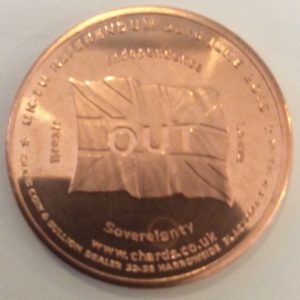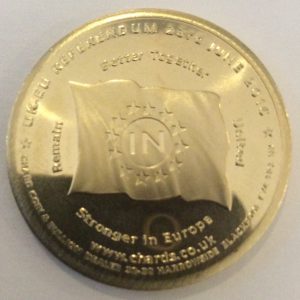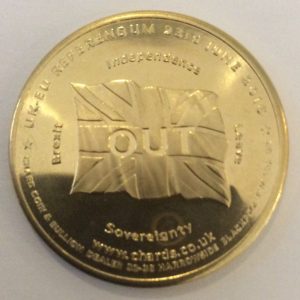Mar 27, 2022 | awards, exonumia, medals, news
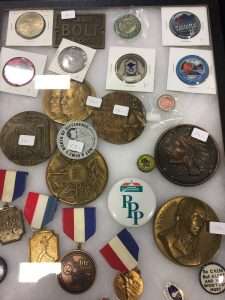
Medals, awards, casino chips, and a Challenge Coin
Medals come in many forms, from those that can be pinned to clothing to something equivalent to a token. They can be shaped, round, or a multilayered object presented to winners, participants, or for significant achievements.
Some people collect medals but may not consider themselves numismatists. Michael Phelps may not consider himself a numismatist but has one heckuva collection of Olympic medals, and Katie Ladecky is building quite a collection.
Challenge coins are a type of award. In its original intent, challenge coins are passed to someone deemed worthy of being honored by the issuer. Collectors take pride in collecting challenge coins like Brian Williams. During a segment of Nightly News, Williams showed off his collection. Over the last 10-15 years, challenge coins expanded beyond military service and civilian agencies. City agencies, law enforcement, and many others now issue challenge coins. It has opened the market to new collectors. Challenge coin collectors do not consider themselves numismatists, but they are as dedicated to collecting challenge coins as a Morgan dollar collector searching for VAMs.
As time progresses, there are new opportunities to collect awards and medals. Collections of medals and awards are now selling in estate sales and auctions. Families do not know what their loved ones collected and are selling below value. It is a tremendous opportunity to join this area of the market.
Awards and medals create an opportunity to expand collections and welcome more collectors to the community.
And now the news…

March 18, 2022
Princeton University Library’s (PUL) Numismatic Collection nearly tripled its Byzantine coin collection when it acquired 11,256 Byzantine coins from the estate of Dr. Chris B. Theodotou on March 8, 2022.

→ Read more at
infodocket.com

March 21, 2022
The United States' first woman to fly into space has lifted off a new mission, this time to orbit the nation in the form of a new circulating coin.

→ Read more at
collectspace.com

March 21, 2022
“Working with our partners Excir, we have introduced world-first technology to the UK capable of recovering precious metals from electronic waste in seconds." The Royal Mint is to have a go at a 21st-century approach to alchemy, turning electronic waste into gold.

→ Read more at
proactiveinvestors.co.uk

March 23, 2022
Fans in Samoa can start their own Justice League Silver Coin collection with 12 officially-licenced DC Comics coins celebrating their most legendary heroes & villains.

→ Read more at
supermanhomepage.com

March 23, 2022
The 2,000-year-old gold piece, perhaps worn by one of the murderers, could sell for $2 million

→ Read more at
smithsonianmag.com

March 26, 2022
The rising price of metals including nickel and copper has led to a unique valuation of the metal contained inside common U.S. coins. What Happened: The price of nickel has soared in 2022.

→ Read more at
benzinga.com
Mar 6, 2022 | coins, foreign, medals, news
In support of the Ukrainians fighting for their freedom, the Monnaie de Paris created the Solidarity with Ukraine Mini-Medal. The copper-nickel medal is 34mm in diameter and features the Eifel Tower next to a colored Ukrainian flag. On the Ukrainian flag is the French national motto “Liberté, Egalité, Fraternité.”
The reverse is described as having a common reverse used by the Monnaie de Paris with the 2022 date.
Each medal is 10€ (about $10.93), with 8€ donated to the French Red Cross for Ukrainian relief. The Monnaie de Paris does not say that they will ship to the United States or the costs. Mint officials will likely answer an inquiry on Monday.
If you purchase a medal from the Monnaie de Paris, remember that most credit card companies will charge a transaction fee for converting euros to dollars. Contact your credit card company to ask about the charges.
You can find the medal on the Monnaie de Paris website. The link will help you visit the page in English.
Please watch @coinsblog on Twitter and this post for updates on availability and shipping to the United States.
And now the news…

February 28, 2022
The newfound Roman coin in Hungary features a bearded Emperor Volusianus on one side and Libertas, the personification of freedom, on the other.

→ Read more at
livescience.com

March 2, 2022
The Royal Canadian Mint says it will be donating the net proceeds of sales on its 2022 pysanka-themed collector's coins to the Red Cross Ukrainian relief fund in light of the Russian invasion. “For the past seven years, the Mint has proudly honoured the richness of Ukrainian culture and artistry in Canada with a best-selling series of pysanka-themed collector coins.

→ Read more at
ottawa.ctvnews.ca

March 3, 2022
Charles Spencer just found buried treasure (kidding…sorta). Today, Princess Diana’s brother shared a must-see photo on his personal Instagram account, featuring a Roman coin that was discovered at Althorp House (the English estate where the siblings grew up).

→ Read more at
purewow.com

March 4, 2022
A gold stater from Lydia, one of the first coins in the world. Such coins were the very first coins to be used in the world.

→ Read more at
greekreporter.com

March 4, 2022
The Department of Homeland Security just returned a trove of artifacts deemed to be the property of the French government, and five gold ingots that were likely smuggled to the U.S. decades ago and which landed in a Bay Area auction house, were among them.

→ Read more at
sfist.com

March 4, 2022
Since November, we have published 38 coin ads throughout our newspapers in Ohio and Michigan.

→ Read more at
athensmessenger.com

March 5, 2022
The Bangla word Takshal which is "mint" in English, is a place where money is coined, especially under state authority. Since Muslim rule in Bengal was established in 1205 by Ikhtiyar Uddin Muhammad bin Bakhtiyar Khalji, the rulers started making coins from the capital and other important administrative and commercial cities.

→ Read more at
tbsnews.net
Feb 9, 2022 | exonumia, medals

Radio City Music Hall
(Photo by Ajay Suresh used under the CC by 2.0 license)
Radio City, called the Showplace of the Nation, was developed along with Rockefeller Center in 1930-32 for the Metropolitan Opera. The construction of Rockefeller Center was funded by the Rockefeller Foundation, headed by John D. Rockefeller, Jr. When the opera backed out, Rockefeller negotiated with RCA to continue the construction of Radio City as a multimedia showplace.
My first visit to Radio City and Rockefeller Center was in 1968 during the winter break from school. My (late) mother, who grew up on Coney Island, understood that New Yorkers did not take the time to see the sights in their own city. To make up for the time she lost as a child to see New York, she took her children to play tourist during school breaks.
The trip to Manhattan was to see Saint Patrick’s Cathedral, Rockefeller Center, including the ice rink, and then see a movie at Radio City. I do not remember the movie we saw, but my mother later told me that they showed three short movies, and it cost 25-cents for my brother and me (that’s $2 accounting for inflation).
Before going to the movie, we toured the main stage where the famous Rockettes performed. As part of the tour, we saw the Rockettes practice and visited with a few on stage. I remember being amazed at how long their legs were — which is not bad for an eight-year-old!
Many years later, I worked for NBC and visited Radio City often. When NBC was involved in a live production in Radio City, I used my connections within NBC Sports to watch the rehearsals from the production trucks. Before the final rehearsal, I was allowed into Radio City to see the performance. Later, I returned to my office on the 16th floor, two floors above David Letterman’s offices.
The aluminum medal is 40 mm in diameter. On the front is an image of Radio City and the reverse has a view of the main theater looking at the stage. It is a well-executed image that uses the unique design of the theater to give the image depth.
While taking another look at the medal, it reminds me of a Mardi Gras token.
As I keep finding these great collectibles, I have to develop a better way to store them. My current system cannot handle my recent expansion, especially when the tokens and medals are different sizes. I will report what I come up with.
Feb 8, 2022 | exonumia, medals
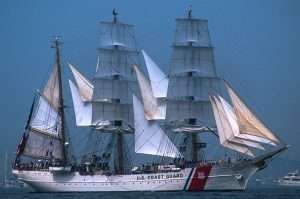
USCGC Eagle from OpSail 2000.
(Image courtesy of OpSail Inc.)
I recently searched the popular online auction site and came across a bronze medal that made me smile. I found a 1986 OpSail commemorative medal.
Operation Sail (OpSail) was founded in 1963 with the support of President John F. Kennedy to celebrate significant milestones in the New York Harbor. OpSail features tall ships of the past but welcomes all sorts of ships from around the world. The first OpSail was the 1964 World’s Fair Parade of Ships. All OpSail events are on July 4th.
The third OpSail was the 1986 Statue of Liberty Centennial, and it was a big year that would become a year-long party for New York City. The Mets started hot and ran away with the National League East, leading to a World Series victory in the fall. The Giants ended their 1985 season in great shape during January. While the Mets were winning the World Series, the Giants were putting their imprint on the NFL, which led to a Super Bowl victory the following January.
In 1986, I lived on Long Island and worked on Wall Street, enjoying life. My parents came to New York for a visit, and we had to go to OpSail. We piled into my car and drove to the Fort Hamilton neighborhood, and we parked and walked to the park area south of the Belt Parkway.
I do not know if the park area along the shore has a name, but we joined the throngs of other people milling around the park to watch the ships sail by. While the parents stayed in one area, the group of cousins walked closer to the Verazzano Bridge to get a better look at the harbor. We had a good view of the water show from the FDNY fireboats. Later, we drove back to Long Island for dinner and took the train into Manhattan to watch the fireworks.
We made our way downtown to the area just north of the entry to the Staten Island Ferry to watch the fireworks. When the fireworks ended, we walked up a few blocks, grabbed some drinks, and let the crowd lighten before taking the train back to Penn Station and back to Long Island.
I dropped my parents off at their hotel before returning to my tiny one-bedroom apartment. The last thing I remember was sitting in a chair drinking water before waking up a few hours later in the same chair.
Finding the medal brought back the flood of memories from that day, and I had to add it to my collection.
While looking for more information about the medal, I came across a 1986 story in The New York Times that described the medals produced for the Statue of Liberty Centennial.
The medal’s obverse is the logo used by OpSail ’86, representing the tall ships surrounded by a rope tied in a square knot. The initials “gd” are along the rim under the left loop of the square knot. The reverse shows a tall ship passing by the Statue of Liberty.
The bronze medal is part of an official three-medal set issued for the celebration. The gold and silver medals contain one troy ounce of the medals. The one-ounce gold medal sold for $595 ($1524 in today’s funds), the one-ounce silver medal sold for $34.95 ($89), and the 51 mm 1.75 ounce bronze medal sold for $19.95 ($50).
The “gd” initials are likely for the Green Duck Mint of Hernando, MS, who struck the medals for OpSail ’86. Maranatha Holdings of Jersey City sold the medals for the organization.
Now that I know there are gold and silver medals for OpSail ’86, I have to find them to complete the set.
The New York Times article said that the Statue of Liberty Foundation issued 11 medals featuring different reverse themes. Frank Gasparro designed the medals. He retired as Chief Engraver of the U.S. Mint in 1981.
I added all 11 medals to my growing wishlist.
Feb 1, 2022 | commemorative, medals, personal
I have not talked about my favorite news of January, and I waited until I received a numismatic collectible to go along with the news. In case you have not heard

After Georgia’s 33-18 victory over Alabama to capture our first National Championship in 41 years, my fingers sprinted to the Georgia Bookstore website to place a significant order. Included in my order was the obligatory numismatic item to add to my collection
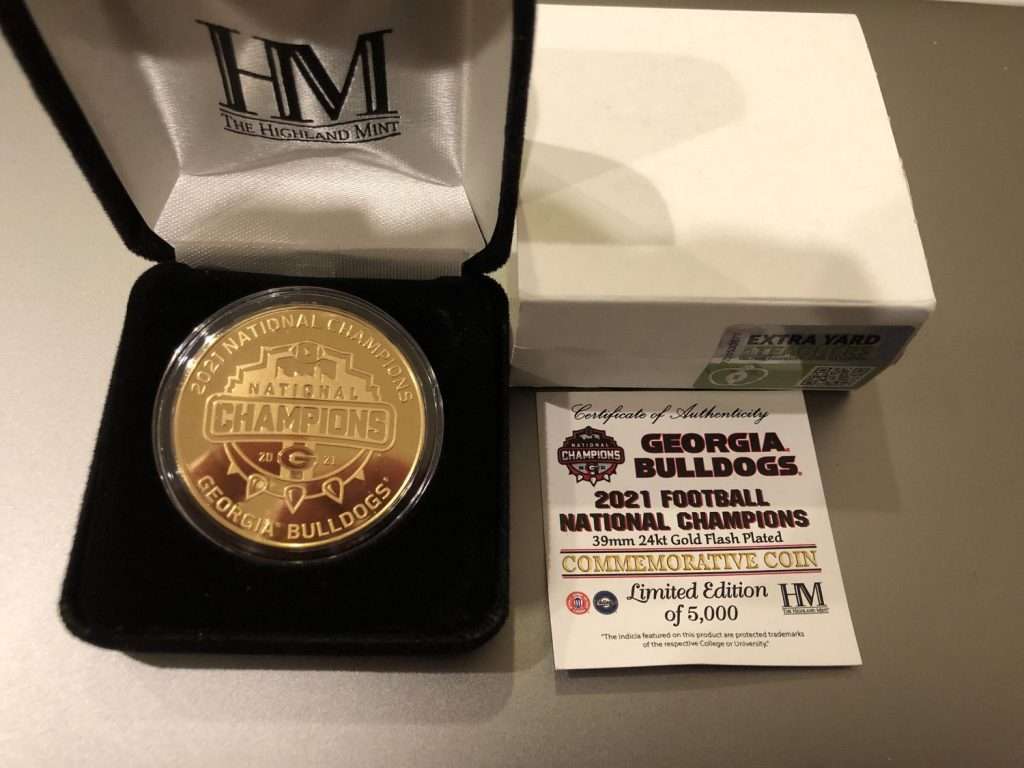
Struck by the Highland Mint of Melbourne, Florida, I added the gold-plated medal to my collection next to my 2018 Rose Bowl victory commemorative medal.
The Highland Mint has limited production to 5,000 medals. It is a 39 mm gold-plated masterpiece that has me excited.
The Dawg Nation has been celebrating for the last three weeks. We are ecstatic and will continue to celebrate for the next few months. In the meantime, I may go to the Highland Mint’s website to see what else I can add to my collection. HOW BOUT THEM DAWGS!
Dec 14, 2021 | medals
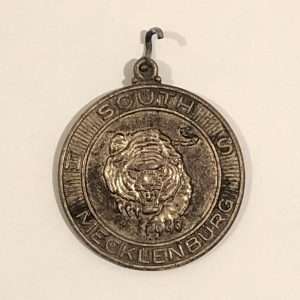
Hometown collecting now includes this medal from South Mecklenburg High School, where I went in the 1970s.
My family moved from New York to just outside of Charlotte in 1974. The area was outside of Charlotte, and Charlotte fueled its growth by annexing unincorporated parts of the county just over its borders. Within a few years, we were living in Charlotte.
I went to high school at South Mecklenburg High School. It was in one of the county’s unincorporated areas with a mailing address of nearby Pineville. Pineville is famous for being the birthplace of James K. Polk, the 18th President of the United States.
South Meck was the local basketball power. Future college and pro stars like Bobby Jones and Walter Davis played for South. After Jones and Davis graduated, they went to play for the University of North Carolina and then starred in the NBA. We won the State AAAA Championship my sophomore year.
While doing my hometown search for numismatics from Brooklyn and New York City, I had an idea to search for items from other times in my early life. I entered “South Mecklenburg” in the search bar to see what I could find.
After scrolling past old copies of the school yearbook, I found a bronze medal for the high school. I do not remember a medal like this. After I dug through a box to find an old yearbook, it resembles a school’s logo in the late 1960s and early 1970s. Since I collect numismatics of my past, I bought the medal and waited for it to be shipped.
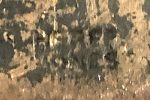 The seller was from Europe and waited for the mail to swim across the pond. It was better looking in hand than in the picture online. The medal is 42mm in diameter with something to attach to a chain or a ribbon. It is one-sided, and Herff Jones is engraved on the reverse. I tried to contact Herff Jones and said they do not think they have records going that far back. Someone was going to look and see what they could find.
The seller was from Europe and waited for the mail to swim across the pond. It was better looking in hand than in the picture online. The medal is 42mm in diameter with something to attach to a chain or a ribbon. It is one-sided, and Herff Jones is engraved on the reverse. I tried to contact Herff Jones and said they do not think they have records going that far back. Someone was going to look and see what they could find.
I graduated from South in 1978 then enrolled at the University of Georgia. Although I have found a few medals from Georgia, I may change my search criteria and see what else I can find.
Sep 10, 2020 | history, medals
My desk is nowhere near being clean and organized as I would like it to be. Tonight, I lifted a stack of papers looking for something and found my Long Island Railroad Sequicentenial bronze medal.
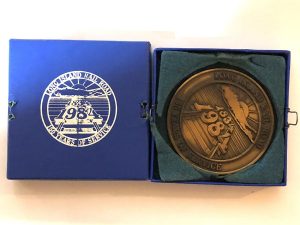 The Long Island Railroad (LIRR) is the largest commuter railroad in the United States. The LIRR runs the length of Long Island to bring commuters into New York City in the morning and home in the afternoon. The LIRR is part of everyone’s life in Nassau or Suffolk Counties, even if you are not a commuter.
The Long Island Railroad (LIRR) is the largest commuter railroad in the United States. The LIRR runs the length of Long Island to bring commuters into New York City in the morning and home in the afternoon. The LIRR is part of everyone’s life in Nassau or Suffolk Counties, even if you are not a commuter.
When the LIRR was chartered on April 24, 1834, its mission was to provide rail service between New York City and Boston. The service used a ferry connection between Greenport on Long Island’s North Fork and Stonington, Connecticut. Weather and other issues forced that route to stop operating in 1849, but overland routes continued.
The Pennsylvania Railroad purchased the Long Island Railroad in 1900. They broke up the service that went north to Boston and the Long Island segments. The northern service is now part of Metro-North, the third-largest commuter railroad. The LIRR remained as a service to Long Island for both commuter and freight rail.
After World War II, the new middle class began to purchase more cars, causing a decline in ridership. In the early 1950s, New York State began to subsidize commuter rail services around New York City. By 1965, the state purchased the LIRR from the Pennsylvania Railroad to create the Metropolitan Commuter Transportation Authority (MCTA). A short time later, the state bought Metro-North from the New York Central Railroad, who previously purchased it from the Pennsylvania Railroad. When the state completed the purchase of the three remaining subway lines, the agency was renamed the Metropolitan Transportation Authority (MTA).
Today, the MTA is responsible for the New York City Transit Authority (subway and busses), the bridges and tunnels in New York City, the LIRR, Metro-North, and a cross-jurisdiction police department run under state authority. The MTA partners with New Jersey Transit for the parts of their service that run in New York. New Jersey Transit is the second-largest commuter rail service.
Remarkably few railroads have survived in the United States, but the LIRR is still going. The LIRR is the oldest commuter rail service in the United States. It was quite an accomplishment to celebrate 150 years. Along with the announcements of service improvements, the LIRR created many souvenirs, including a bronze medal.
The Medallic Arts Company designed and struck a 64mm (2.5 inches) 5mm thick bronze medal for the LIRR. The obverse depicts the logo the LIRR used to celebrate the sesquicentennial. The reverse uses a logo found on stock certificates from the mid 19th century. It may not have been the original logo, but it was the oldest found.
The surface of the medal has an antiqued finished and appears to have a shellac coating.
Senior executives received the medals as a bonus, and many were given to VIPs. Employees could purchase medals from the LIRR Public Affairs office in Jamaica Station for $8 per medal. To purchase the medals, employees had to provide their “IBM Numbers” at the purchase time.
For those not old enough to remember, “IBM Numbers” were early employee identification numbers. The name came from the number a computer, the company’s IBM mainframe, and assigned to the employee. Companies that used the system would use a punchcard system to identify employees.
The medal is not common but not scarce. Several years ago, an inquiry to the LIRR about the medals amused their public relations department. Aside from not having records that old, nobody in the office worked for the LIRR when the medals were issued.
A casual study of the market shows that most are missing the presentation box. The presentation box was likely only available to the executives and VIPs. It is more difficult to find the medal with the original presentation box.
If you like what you read, share, and show your support 
Jun 10, 2019 | medals, news
 The delay in the report was because I was traveling home from seeing my nephew graduate from high school. Although high school graduation may seem like something that did not require a long trip, it was necessary for me to see my nephew graduate. Since he is classified as “special needs,” this was a huge event in his life.
The delay in the report was because I was traveling home from seeing my nephew graduate from high school. Although high school graduation may seem like something that did not require a long trip, it was necessary for me to see my nephew graduate. Since he is classified as “special needs,” this was a huge event in his life.
Although a stupid rule prevented him from graduating with honors (they moved in the middle of the year and did not spend enough time at the school), he did qualify for an academic award that covers all four years of high school. The award was a medal, which he wore along with an academic honor rope.
Medals are an interesting part of numismatics. They are not a currency but has been used as such. They have no value, but we attach importance to them. Medals come in all shapes and sizes and have their appeal.
Award medals are usually happy. They represent an accomplishment and in many cases worn as a proud sign of that accomplishment. Even medals awarded posthumously that provide reminders of the departed are appreciated because it represents the good within that person.
Medals may be one of the most underappreciated areas of numismatics. Maybe that should change. It might cause more people to become interested in the hobby.
And now the news…

June 3, 2019
Details of a new collectable coin series was announced today by the Royal Australian Mint to celebrate 50 years since Neil Armstrong took “one giant leap for mankind”.  → Read more at news.com.au
→ Read more at news.com.au

June 5, 2019
The use of smaller coin denominations is gradually becoming extinct as many…  → Read more at ghanaweb.com
→ Read more at ghanaweb.com

June 5, 2019
Dear Reader, As you can imagine, more people are reading The Jerusalem Post than ever before. Nevertheless, traditional business models are no longer sustainable and high-quality publications, like ours, are being forced to look for new ways to keep going.  → Read more at jpost.com
→ Read more at jpost.com

June 6, 2019
The coin sold for five times its estimate. A 30-year-old British man with a metal detector came across a small 24-carat gold coin the size of a penny this past March. Yesterday, it sold at auction for $700,000.  → Read more at news.artnet.com
→ Read more at news.artnet.com

June 6, 2019
When it comes to honoring troops who made the ultimate sacrifice as they gained victory during the Normandy landings, it’s not partisan. House Minority Whip Steve Scalise (R-La.) is partnering with Rep.  → Read more at ijr.com
→ Read more at ijr.com

June 7, 2019
THESSALONIKI, Greece – Police in central Greece have arrested a man suspected of dealing in illegally excavated antiquities who had allegedly placed an advert to sell ancient coins on a Greek website for second-hand items.  → Read more at foxnews.com
→ Read more at foxnews.com

June 8, 2019
It started with a hiker who plucked two curious objects from a bit of scattered trash, a discovery that launched months of speculation and investigation. Each wafer-thin bit of metal — one about the size of a quarter, the other a dime — bore strange inscriptions on either side, worn nearly smooth over time.  → Read more at azcentral.com
→ Read more at azcentral.com
Nov 4, 2018 | Britain, medals, news
What happens when a policy that was supported by a popular vote becomes less popular? You get the situation that the British government faces as Brexit inches closer to its March 2019 execution.
On June 23, 2016, the people of the United Kingdom held a referendum as to whether the country should leave the European Union. The vote and process has been called “Brexit,” a portmanteau of the term “Britain Exit,” as in should Britain exit the E.U.?
Brexit won by a very slim margin.
As a result of the Brexit vote, the British Parliament voted to complete the Brexit process in March 2019 and the Prime Minister resigned. PM David Cameron was against Brexit and felt that someone else should lead the government who favored the process. Theresa May was selected to be Britain’s second female Prime Minister and will lead the country through Brexit.
However, polls in Britain show that Brexit is no longer as popular as it was in 2016. These polls were taken following the announcement that the Royal Mint mint will be producing a 50-pence coin commemorating Brexit next March.
Although the coin has yet to be designed, the British tabloids, especially those who have soured on Brexit, have been running editorials with anti-Brexit mockups. With these mock-ups frequently appearing in Britain’s newspapers, polls are showing that the pre-Brexit election support of nearly 49-percent has eroded to 37-percent.
Opinions on the concept of a Brexit coin are almost evenly split with 37-percent in favor of the coin, 34-percent against, and 29-percent with no comment or opinion.
In the United States, the only way to raise public passion about a coin is for it to have an error, such as the “Godless Dollars” for coins missing their edge lettering and the motto “In God We Trust.” Otherwise, only we numismatists care.
At least the Brits are paying attention!
And now the news…

October 30, 2018
View photosMore A special 50p is just one of the many changes Britain’s departure from the UK will bring. The commemorative coin, which is expected to carry the words “Friendship With All Nations” will be available from March 29 – the day the UK leaves the EU.  → Read more at finance.yahoo.com
→ Read more at finance.yahoo.com

October 30, 2018
New collectors' coins commemorating statesman Ignacy Jan Paderewski are to be released on Tuesday, in a year in which Poland marks its independence centenary. Paderewski's is the fourth coin in a series issued by the National Bank of Poland.  → Read more at thenews.pl
→ Read more at thenews.pl

October 31, 2018
“II am visiting this gallery for the second time in a month,” says Ayushi, a New Delhi-based history honours student. “The glimpse into the past is so fascinating that I have brought along my friends to have a first-hand experience of the remarkable collection of Indian currency,” she adds.  → Read more at gulfnews.com
→ Read more at gulfnews.com

November 1, 2018
The Royal Australian Mint wants you to be on the lookout for $1 coins specially marked with A, U or S.  → Read more at abc.net.au
→ Read more at abc.net.au

November 2, 2018
Increased gold buying by consumers and central banks pushed overall demand for the yellow metal up slightly in the third quarter, according to the World Gold Council's Gold Demand Trends 2018 Report.  → Read more at seekingalpha.com
→ Read more at seekingalpha.com
Oct 11, 2018 | currency, education, exonumia, medals, tokens
I was going to stop doing the LOOK BACK series after the summer, thinking I would have time to create new content. But we all know that real life has a way of changing even the best-laid plans. While fighting off a severe sinus infection thanks to the mold spores that thrive in this damp weather, business picked up. I am ecstatic that my new business is catching on but the infection put a damper on things.
I need a week to catch up. While doing so, I will publish two more LOOK BACK articles and try to finish a few of the new posts I started. For today’s LOOK BACK, I want to remind everyone that numismatics is more than coins. You can satisfy your collecting urges with exonumia as well as with coins.
Although the dominant area of numismatics is the collection and study of legal tender coins, numismatics is more than just coins. Numismatic is the collecting and study of items used in the exchange for goods, resolve debts, and objects used to represent something of monetary value. This opens up numismatic collecting to a wide range of items and topics that could make “the hunt” to put together the collection as much fun as having the collection.
Exonumia is the study and collection of tokens, medals, or other coin-like objects that are not considered legal tender. Exonumia opens numismatics to a wide variety of topics that could not be satisfied by collecting coins alone. An example of exonumia is the collection of transportation tokens. You may be familiar with transportation tokens from your local bus or subway company who used to sell tokens to place into fare boxes. Others may have used tokens to more easily pay in the express lanes at bridges and tunnels. A person who collects transportation tokens is called a Vecturist. For more information on being a Vecturist, visit the website for the American Vecturist Association.
Token collecting can be the ultimate local numismatic collection. Aside from transportation tokens, some states and localities issued tax tokens in order to collect fractions of a cent in sales taxes to allow those trying to get by in during down economic times to stretch their money further. Some communities issued trade tokens that allowed those who used them to use them like cash at selected merchants. Some merchants issued trade tokens that were an early form of coupons that were traded as coupons are traded today.
While tokens are items used to represent monetary value, medals are used to honor, commemorate, or advertizing. The U.S. Mint produces medals that honor people, presidents, and events. Medals produced by the U.S. Mint are those authorized by law as a national commemoration including the medal remembering the attacks of 9/11.
Commemorative medals are not limited to those produced by the U.S. Mint. State and local governments have also authorized the producing medals on their behalf that were produced by private mints. Many organizations also have created medals honoring members or people that have influenced the organization. Companies have produced medals to honor their place in the community or something about the company and their community.
Many medals have designs that can be more beautiful than on coins since they are not limited to governmental mandated details and their smaller production runs allows for more details to be added. Medals can be larger and thicker than coins and made in a higher relief than something that could be manufactured by a government mint.
Exonumia collecting also involves elongated and encased coins. You may have seen the machines in many areas where you pay 50-cents, give it one of your cents, turn the wheel and the cent comes out elongated with a pattern pressed into the coin. Elongated coins have been used as advertisements, calling cards, and as a souvenir.
Encased coins are coin encircled with a ring that has mostly been used as an advertisement. One side will call the coin a lucky coin or provide sage advice with the other side advertising a business. Another form of encased coins are encased stamps. Encased stamps were popular in the second half of the 19th century and used for trade during times when there were coin shortages.
Other exonumia includes badges, counter stamped coins, wooden money, credit cards, and casino tokens. Counter stamped coins are coins that have been circulated in foreign markets that were used in payment for goods. When the coin was accepted in the foreign market, the merchant would examine the coin and impress a counter stamp on the coin proclaiming the coin to be genuine based on their examination. Although coins were counter stamped in many areas of the world, it was prevalent in China where the coins were stamped with the Chinese characters representing the person who examined the coin. These Chinese symbols are commonly referred to as “chop marks.”
One type of counter stamped coins are stickered coins. Stickered coins were popular in the first half of the 20th century; they were used as an advertisement. Merchants would purchase stickers and apply them to their change so that as the coins circulated, the advertising would reach more people. Some stickered coins acted as a coupon to entice the holder to bring the coin into the shop and buy the merchandise.
Remember the saying, “Don’t take any wooden nickels?” If you are a wooden money collector, you want to find the wooden nickels and other wooden denominations. Wooden nickels found popularity in the 1930s as a currency replacement to offer money off for purchases or as an advertisement. Wooden nickels are still being produced today mostly as an advertising mechanism.
We cannot end the discussion of exonumia without mentioning Love Tokens and Hobo Nickels. Love Tokens became popular in the late 19th century when someone, usually a man, would carve one side of a coin, turn it into a charm for a bracelet or necklace, and give it to his loved one. The designed are as varied as the artists who created them. Hobo Nickels are similar in that hobo artists would carve a design into a Buffalo Nickel to sell them as souvenirs. While there are contemporary Love Tokens and Hobo Nickels, collectors have an affection for the classic design that shows the emotion of the period.
Currency collecting, formally called notaphily, is the study and collection of banknotes or legally authorized paper money. Notes can be collected by topic, date or time period, country, paper type, serial number, and even replacement or Star Notes (specific to the United States). Some consider collecting checks part of notaphily. Collectors of older canceled checks are usually interested in collecting them based on the issuing bank, time period, and the signature. For the history of currency and their collecting possibilities, see my previous article, “History of Currency and Collecting”.
Scripophily is the study and collection of stock and bond certificates. This is an interesting subset of numismatics because of the wide variety of items to collect. You can collect in the category of common stock, preferred stock, warrants, cumulative preferred stocks, bonds, zero-coupon bonds, and long-term bonds. Scripophily can be collected by industry (telecom, automobile, aviation, etc.); autographs of the officers; or the type of vignettes that appear on the bonds.
Militaria: Honorable Collectibles
Collecting of military-related items may be considered part of exonumia but deserves its own mention. It is popular to collect military medals and awards given to members since the medals themselves are works of art. Families will save medals awarded to relatives and even create museum-like displays to honor or memorialize the loved one.
Militaria includes numismatic-related items that represent the various services. One of the growing areas of collectibles is Challenge Coins. A challenge coin is a small medal, usually no larger than 2-inches in diameter, with the insignia or emblem of the organization. Two-sided challenge coins may have the emblem of the service on the front and the back has the emblem of the division or another representative service. Challenge coins are traditionally given by a commander in recognition of special achievement or can be exchanged as recognition for visiting an organization.
Over the last few years, civilian government agencies and non-government organizations (NGO) have started to create and issue challenge coins. Most of those agencies have ties to the military, but not all. Like their military counterparts, a manager or director can give challenge coins in recognition of special achievement or for visiting an organization.
Another area of military collectibles is Military Payment Certificates (MPC). MPC was a form of currency that was used to pay military personnel in foreign countries. MPC was first issued to troops in Europe after World War II in 1946 to provide a stable currency to help with commerce. MPC evolve from Allied Military Currency (AMC) to control the amounts of U.S. dollars circulating in the war zone and to prevent enemy forces from capturing dollars for their own gain. Prior to World War II, troops were paid in the currency of the country where they were based. With the ever moving fronts and the allies need to control the economies to defeat the Axis powers, AMC was issued to allow the military to control their value.
After the war, MPC replaced APC in order to control the currency and prevent the locals from hoarding U.S. dollars preventing the building of their own economies. When military officials discovered that too many notes were in the circulation, being hoarded, and thriving on the black market, series were demonetized and reissued to military personnel. Those holding MPC notes, not in the military received nothing and were encouraged to circulate their own currency.
MPC were printed using lithography in various colors that changed for each series. From the end of World War II to the end of the Vietnam War there were 15 series printed with only 13 issued. Although the two unissued series were destroyed, some examples have been found in the collections of those involved with the MPC system. Amongst the 13 series that were issued, there are 94 recognized notes available for collectors. Most notes are very affordable and accessible to the interested collector.
The original article can be read here.
 → Read more at infodocket.com
→ Read more at infodocket.com
 → Read more at collectspace.com
→ Read more at collectspace.com
 → Read more at proactiveinvestors.co.uk
→ Read more at proactiveinvestors.co.uk
 → Read more at supermanhomepage.com
→ Read more at supermanhomepage.com
 → Read more at smithsonianmag.com
→ Read more at smithsonianmag.com
 → Read more at benzinga.com
→ Read more at benzinga.com


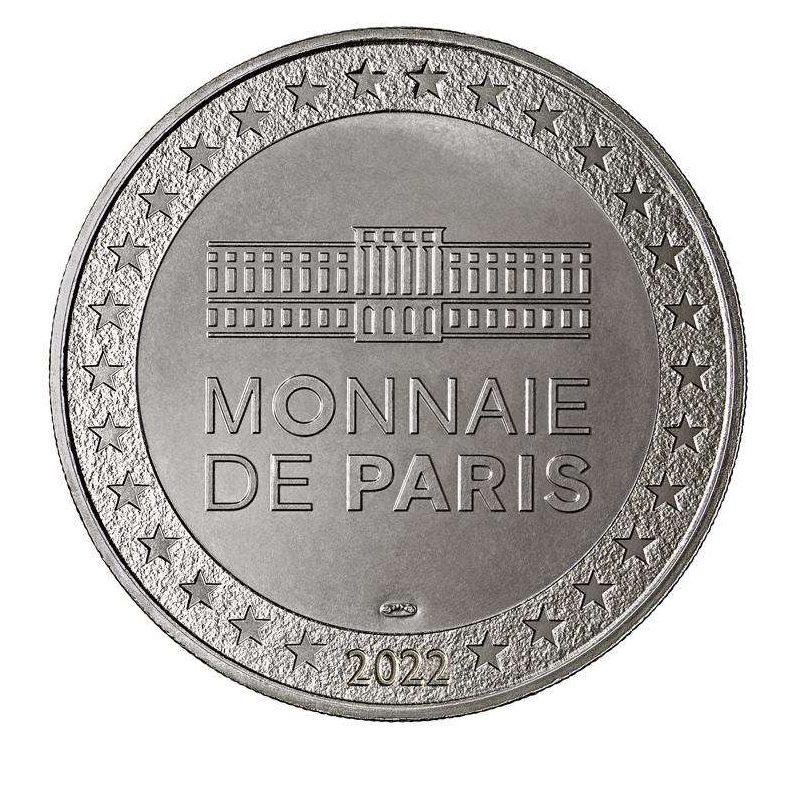




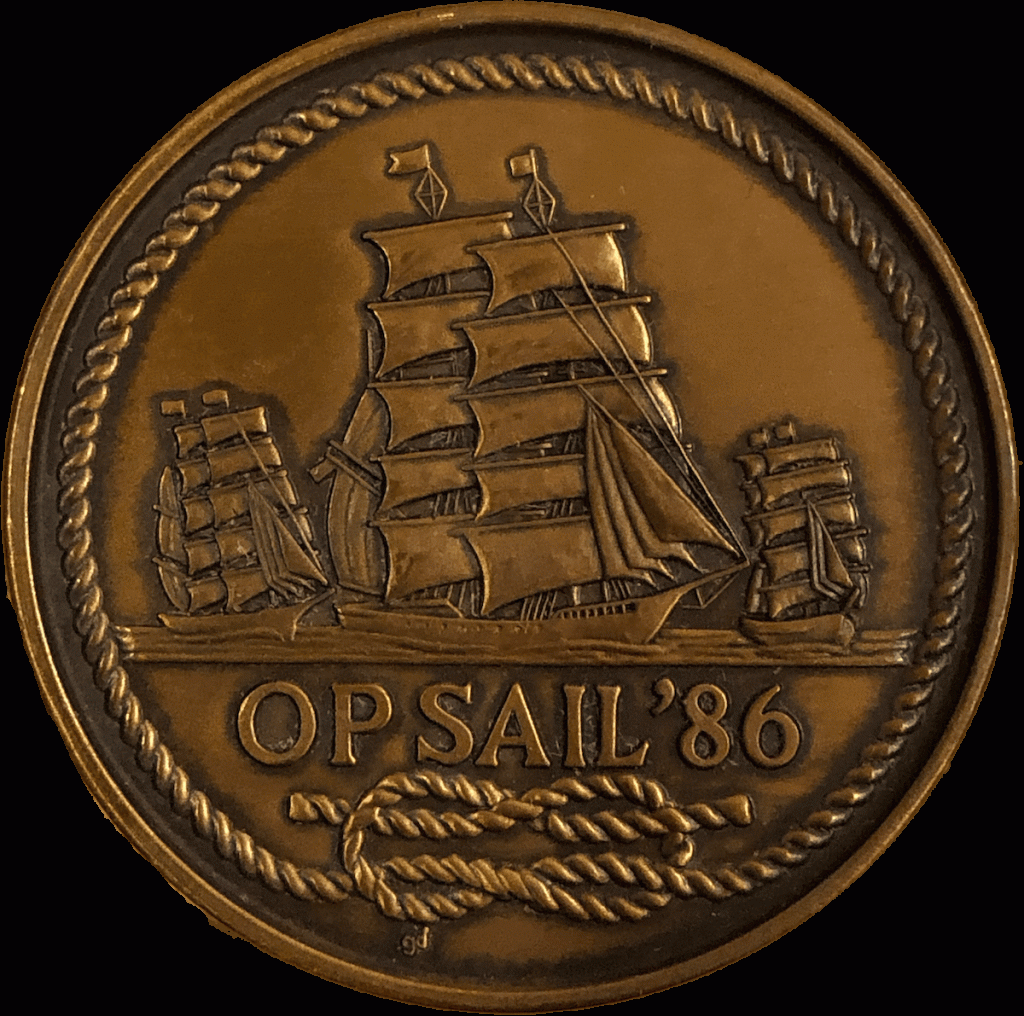
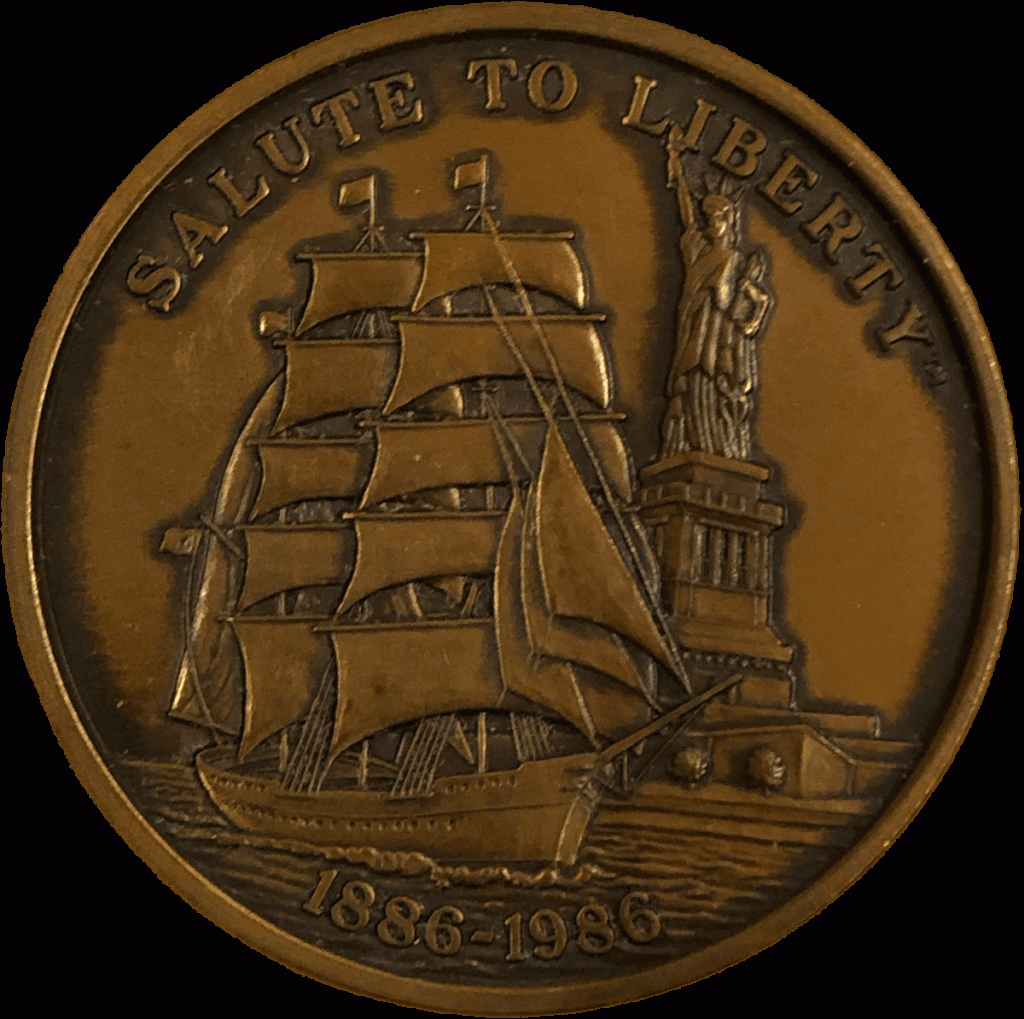


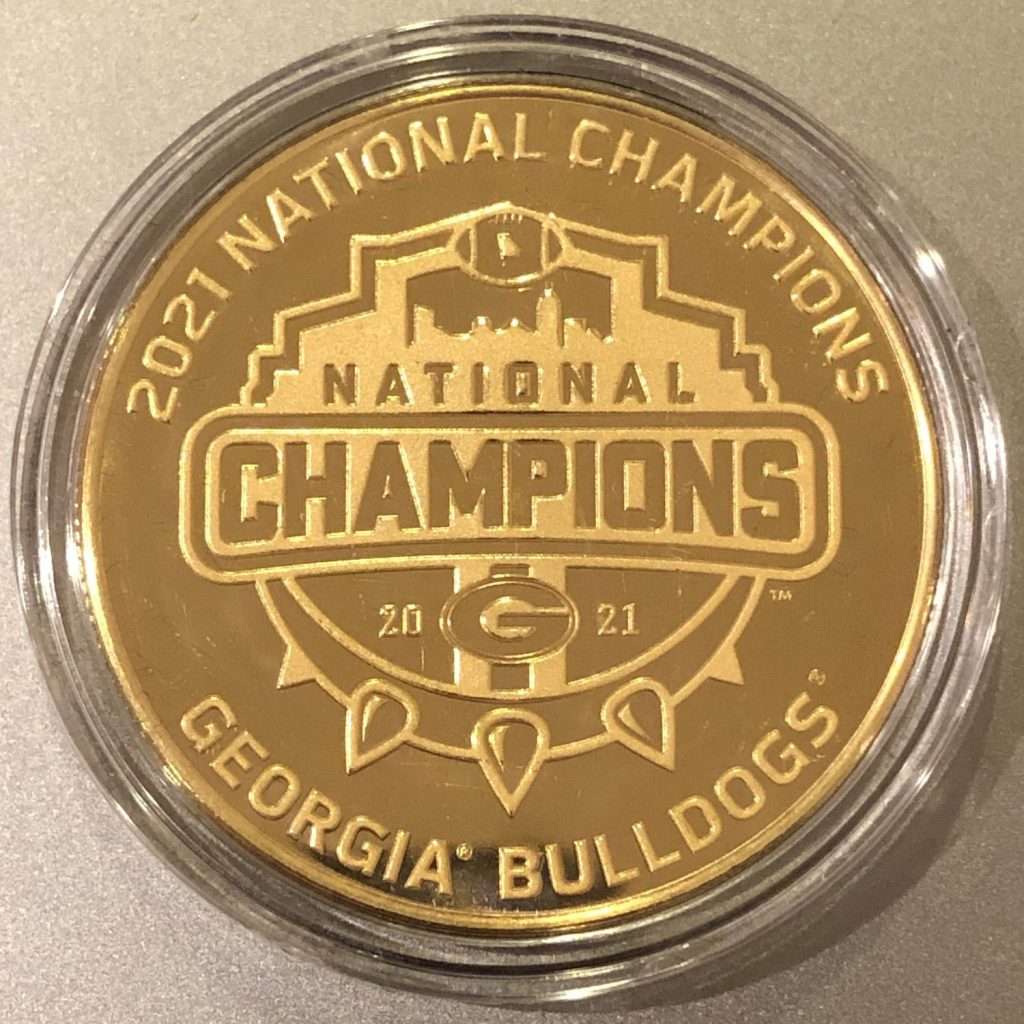
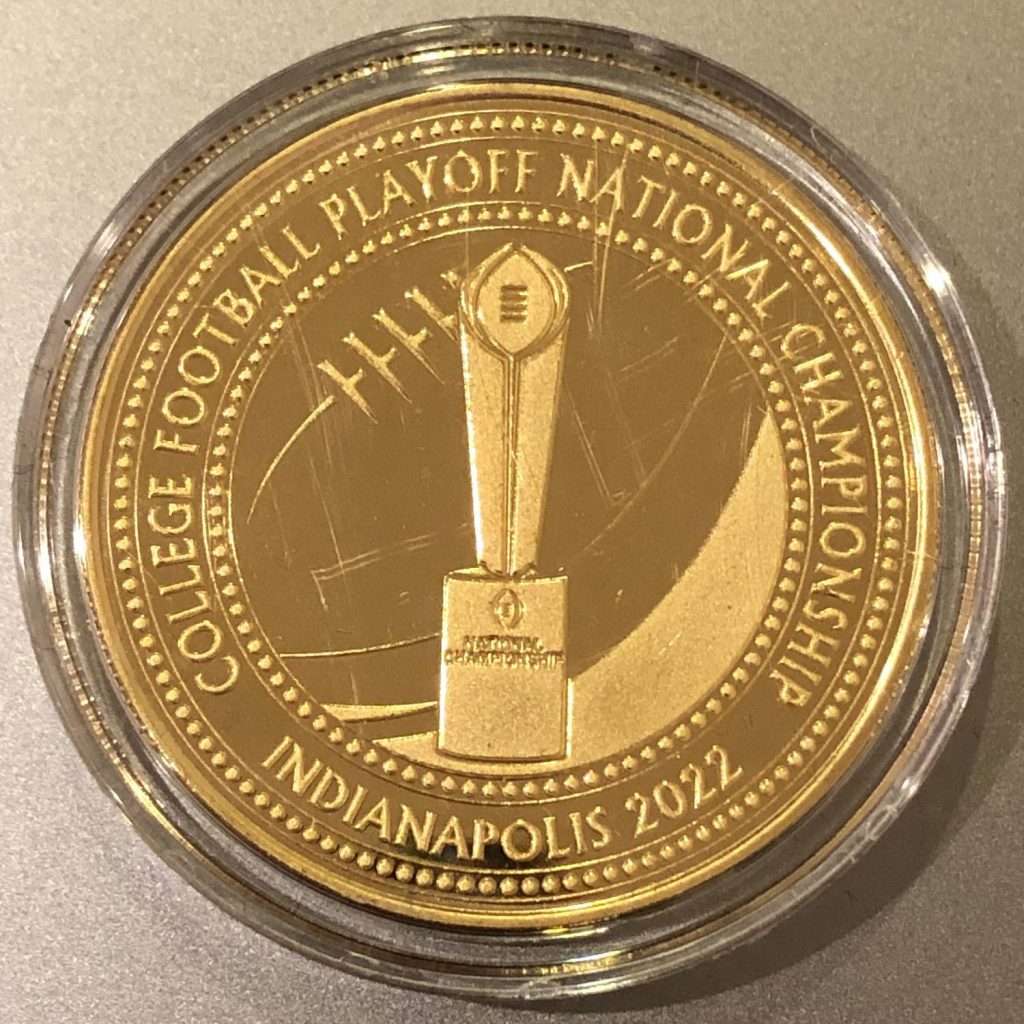



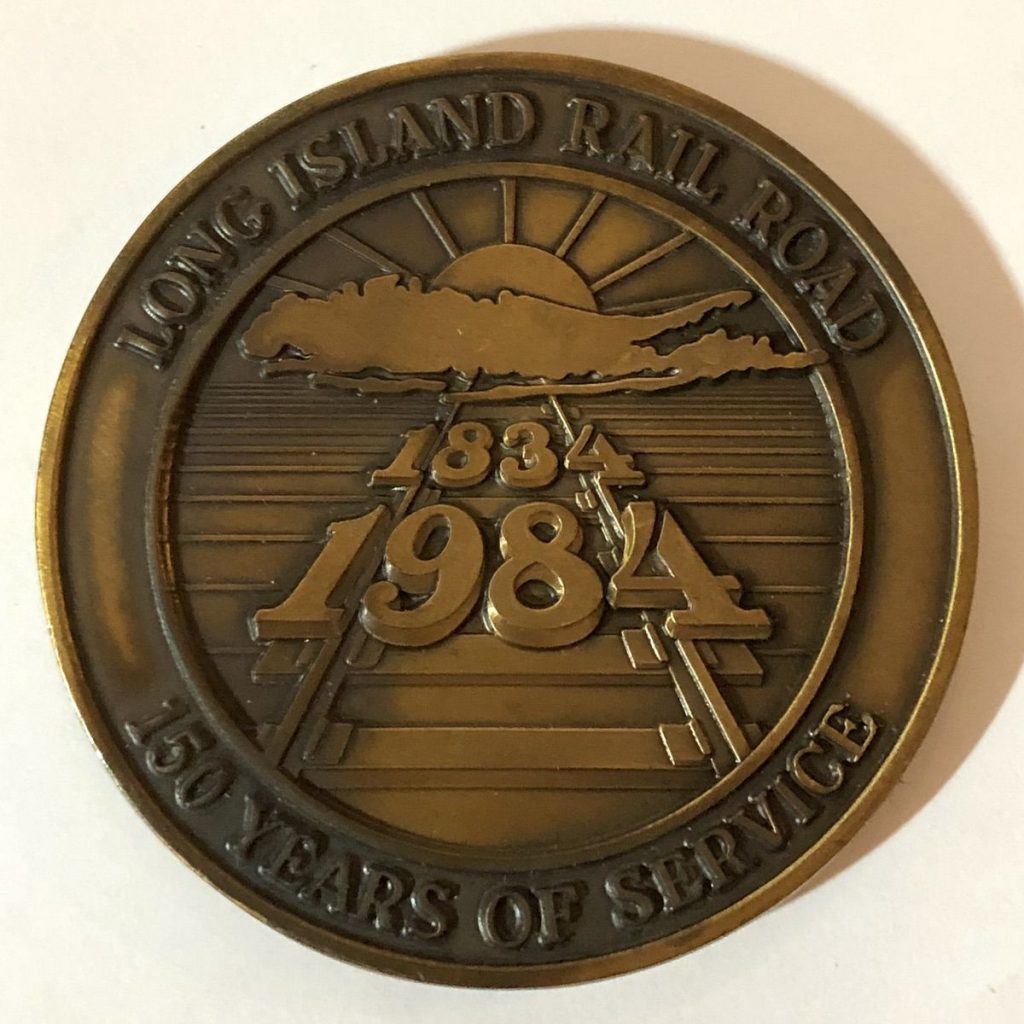
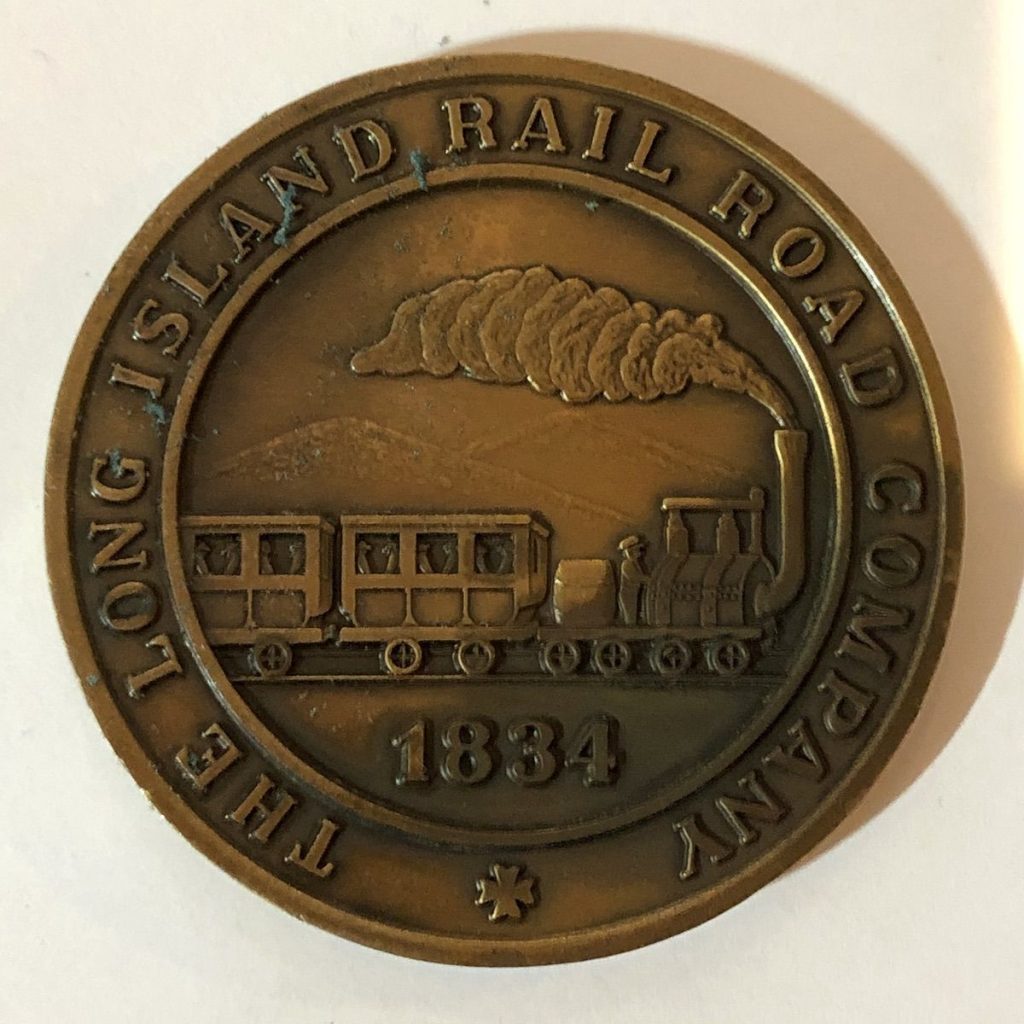

 The delay in the report was because I was traveling home from seeing my nephew graduate from high school. Although high school graduation may seem like something that did not require a long trip, it was necessary for me to see my nephew graduate. Since he is classified as “special needs,” this was a huge event in his life.
The delay in the report was because I was traveling home from seeing my nephew graduate from high school. Although high school graduation may seem like something that did not require a long trip, it was necessary for me to see my nephew graduate. Since he is classified as “special needs,” this was a huge event in his life.
